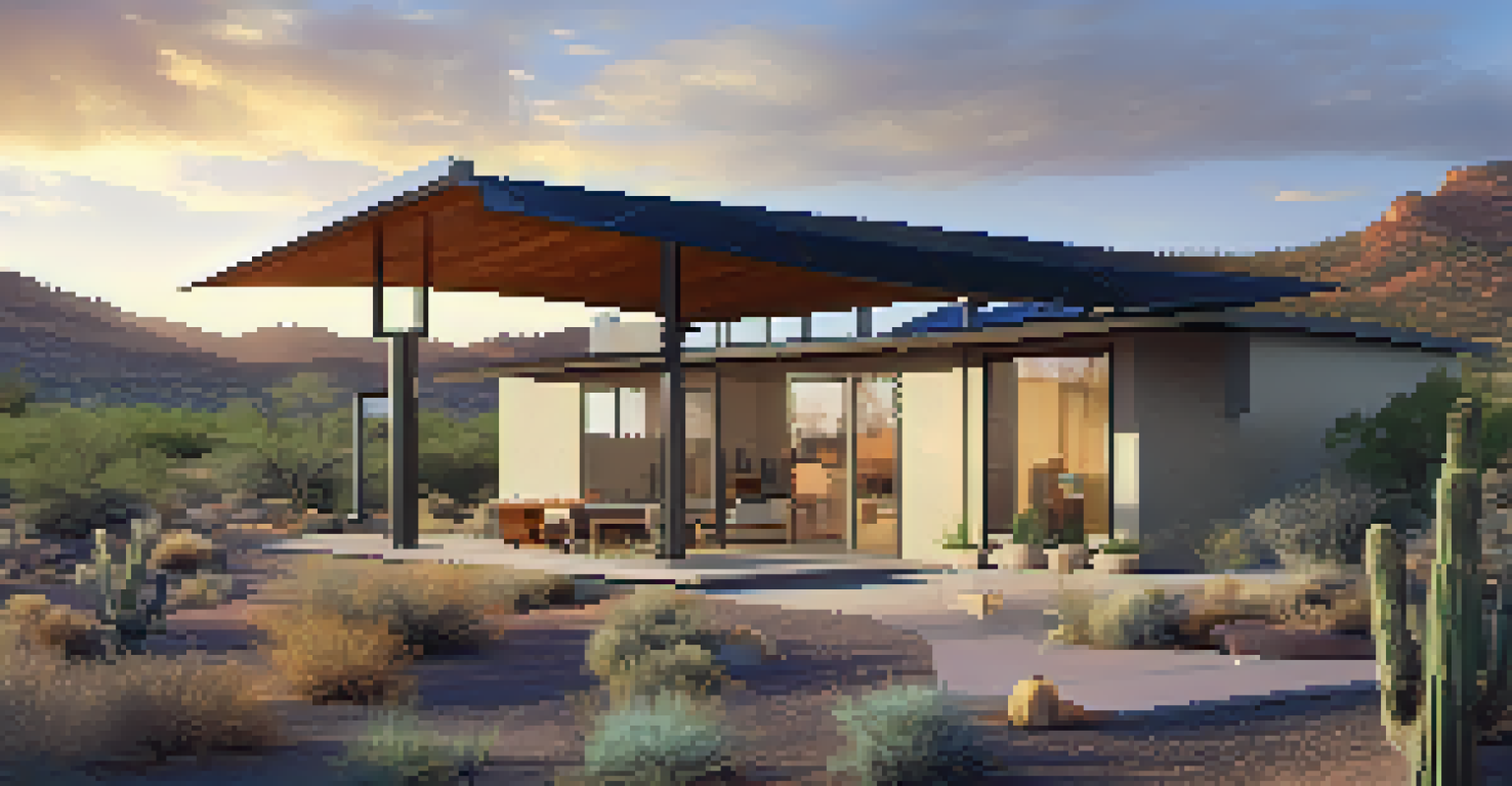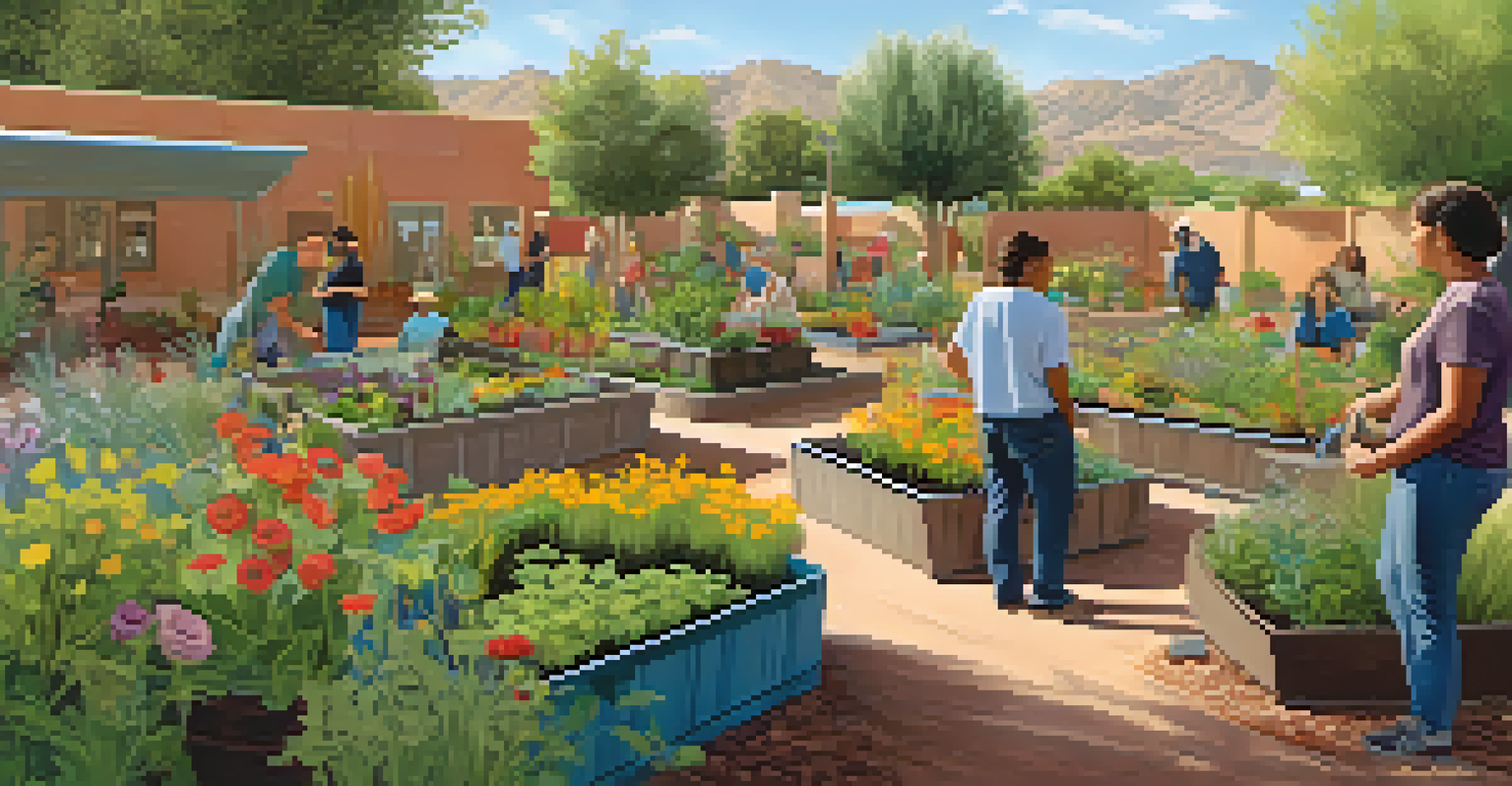Sustainable Design in Arizona's Architectural Landscape

Understanding Sustainable Design in Arizona
Sustainable design refers to the practice of creating buildings that minimize environmental impact while enhancing quality of life. In Arizona, this approach is increasingly vital due to the state's unique climate and ecological challenges. By prioritizing sustainability, architects can help mitigate issues such as water scarcity and extreme temperatures.
Sustainable design is about creating a built environment that enhances the quality of life while minimizing the impact on our planet.
Arizona's architectural landscape is rich in diversity, from desert resorts to urban high-rises. Incorporating sustainable design into these structures not only helps preserve the natural beauty of the state but also ensures that future generations can enjoy it. This evolving practice is reshaping how architects and builders approach their projects.
For many, sustainable design is not just a trend but a necessary shift towards responsible living. By understanding its importance, we can appreciate how it influences our built environment and fosters a deeper connection to the surrounding landscapes.
The Role of Climate in Sustainable Architecture
Arizona's hot and arid climate plays a critical role in shaping sustainable architectural practices. Buildings must be designed not only to withstand the heat but also to utilize natural ventilation and shade effectively. This can mean placing windows strategically or using materials that reflect heat.

Passive solar design is one approach that has gained popularity in the state. This method leverages the sun's energy for heating and cooling, reducing reliance on artificial systems. For instance, many new homes are being designed with overhangs to block the sun during the hottest times of the day.
Sustainable Design is Essential
In Arizona, sustainable design is crucial for addressing environmental challenges like water scarcity and extreme temperatures.
By considering the local climate, architects can create spaces that are not only comfortable but also energy efficient. This leads to lower utility bills for homeowners and a reduction in overall carbon footprints, illustrating the powerful link between climate and sustainable design.
Innovative Materials in Sustainable Construction
The choice of materials is crucial in sustainable design, particularly in Arizona where resources may be limited. Opting for local and recycled materials can significantly reduce a project's environmental impact. For example, using adobe bricks made from local soil can enhance a building's aesthetic while providing natural insulation.
The greatest threat to our planet is the belief that someone else will save it.
Another trend is the incorporation of sustainable materials like bamboo and reclaimed wood, which offer durability and aesthetic appeal without depleting resources. These materials not only reduce waste but also support local economies by promoting sustainable sourcing.
Innovative materials also play a role in energy efficiency. For instance, advanced insulating materials can keep homes cooler in the summer and warmer in the winter, further enhancing sustainability while maintaining comfort.
Water Conservation Strategies in Design
Water conservation is a pressing concern in Arizona, making it a focal point in sustainable architectural design. Rainwater harvesting systems and greywater recycling are becoming standard features in many new constructions. These systems not only reduce water usage but also promote responsible consumption.
Xeriscaping, or designing landscapes that require minimal irrigation, is another effective strategy. By utilizing native plants and efficient irrigation methods, architects can create beautiful outdoor spaces that thrive on limited water resources.
Community Engagement Drives Success
Involving local communities in sustainable design projects fosters ownership and leads to better outcomes that reflect residents' needs.
Integrating these water conservation methods into design is essential for sustainability in Arizona. It ensures that buildings and landscapes can coexist with the environment while addressing the challenges posed by climate change.
Community Engagement in Sustainable Projects
Sustainable design in Arizona is often a collaborative effort that involves the local community. Engaging residents in the planning process can lead to designs that truly reflect the needs and desires of the people who will use these spaces. This fosters a sense of ownership and pride in the community.
Community input can also drive the adoption of sustainable practices. When residents understand the benefits of energy-efficient buildings and water conservation techniques, they are more likely to support and advocate for these initiatives. This grassroots approach can significantly influence local policies and building codes.
Moreover, projects that prioritize community engagement often result in more resilient and vibrant neighborhoods. By working together, architects and residents can create spaces that not only meet functional needs but also enhance the community's cultural and social fabric.
Case Studies: Successful Sustainable Designs in Arizona
Several successful examples of sustainable design in Arizona illustrate the potential for innovation in the state’s architectural landscape. The Desert Botanical Garden in Phoenix showcases eco-friendly structures that blend seamlessly with the natural environment. These designs utilize sustainable materials and techniques that highlight the beauty of the desert.
Another notable project is the ASU's Sustainable Energy Solutions Center, which emphasizes renewable energy and sustainable building practices. Its design incorporates solar panels and energy-efficient systems, demonstrating how modern architecture can contribute to a greener future.
Innovative Materials Enhance Efficiency
Using local and recycled materials not only reduces environmental impact but also promotes energy efficiency and supports local economies.
These case studies not only showcase successful sustainable designs but also serve as models for future projects. They highlight the importance of creativity and collaboration in achieving sustainability goals, inspiring others to follow suit.
The Future of Sustainable Design in Arizona
As awareness of environmental issues grows, the future of sustainable design in Arizona looks promising. Architects and builders are increasingly embracing innovative technologies and practices that align with sustainability goals. This includes advancements in energy efficiency, materials, and construction methods that prioritize eco-friendliness.
The integration of smart technologies into building designs is also on the rise. These systems can monitor energy usage and optimize resource consumption, making buildings more efficient and responsive to the needs of their occupants. This shift towards smarter buildings represents a significant advancement in sustainable architecture.

Ultimately, the future of sustainable design in Arizona will depend on collaboration among architects, builders, policymakers, and the community. By working together, they can create a built environment that not only respects but enhances the unique desert landscape.